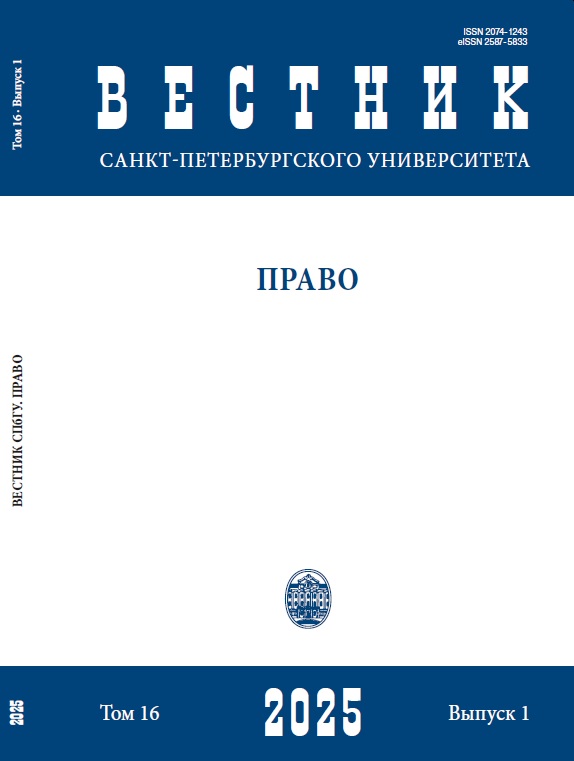The characterisation problem of digital drug in the Iraqi criminal system
DOI:
https://doi.org/10.21638/spbu14.2025.114Abstract
Basing on the current laws in Iraq’s criminal legislative system, this research addresses the issue of identifying a legal framework for characterising digital drugs and thereby establishing criminal culpability. We have tried to urge the Iraqi federal and Kurdistan regional legislators to synchronise the repercussions of the emerging cybercrime and predicate the future consequences of such crimes, based on the principle of protecting the security, stability, and safety of society by enacting modern laws to confront cybercrime, and not impunity for the perpetrators. Therefore, in order to understand the topics of the research, we divided the research into two sections: in the first topic, we studied what digital drugs are (the definition) by defining the mechanism of action of these drugs, in addition to studying the scientific and legal challenges of confronting digital drugs, while in the second topic, we studied the legal mechanism for characterising digital drugs through two approaches: in the first of them, we tried to characterise digital drugs as conventional drugs, while in the second approach, we tried to characterise this drug as a digital fraud. Hence, considering the digitization of drugs, aspects of their organisation and use are embodied in or derived from interconnected computerised systems and databases. This research examines how this development has changed the provision of legislative protection and thus the organisation of regulatory and professional structures as it reshapes the material character of drugs themselves. It draws on the concept of assemblage to provide a theory-based analysis that explores the ontological status of digital drugs, including how they embody utility and value. These are drugs that rely on and are largely composed of multiple digital representations and connections, the use and effectiveness of which are powerfully mediated through digital means. Whereas we still oppose the idea of digital drugs in favour of their non-digital or pre-digital counterparts, or the analogue version.
Keywords:
digital drugs, conventional drugs, binaural beats, allucinogen, delta waves, lectroencephalogram, digital neural network, binaural reproduction
Downloads
References
Downloads
Published
How to Cite
Issue
Section
License
Articles of "Vestnik of Saint Petersburg University. Law" are open access distributed under the terms of the License Agreement with Saint Petersburg State University, which permits to the authors unrestricted distribution and self-archiving free of charge.






